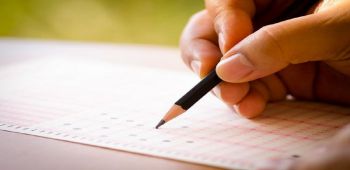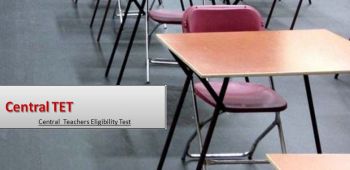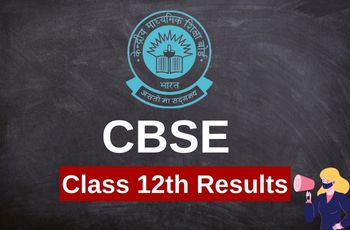Chapter 4: Sorting Materials and Groups
Science
(www.olympiadsuccess.com)
Chapter 4: Sorting Materials and Groups
Class: VI
Exemplar Solutions
Multiple Choice Questions
Question 1
An iron nail is kept in each of the following liquids. In which case would it lose its shine and appear dull?
(a) Mustard oil (b) Soft drink
(c) Coconut oil (d) Kerosene
Answer 1
(b)
Question 2
Pick one material from the following which is completely soluble in water.
(a) Chalk powder (b) Tea leaves
(c) Glucose (d) Saw dust
Answer 2
(c)
Question 3
You are provided with the following materials
(i) Magnifying glass (ii) Mirror
(iii) Stainless steel plate (iv) Glass tumbler
Which of the above materials will you identify as transparent?
(a) (i) and (ii) (b) (i) and (iii)
(c) (i) and (iv) (d) (iii) and (iv)
Answer 3
(c)
Question 4
Boojho found a bag containing the following materials
(i) Mirror
(ii) Paper stained with oil
(iii) Magnet
(iv) Glass spectacles
Help Boojho in finding out the material(s) which is/are opaque.
(a) (i) only (b) (iv) only
(c) (i) and (iii) (d) (ii) and (iv)
Answer 4
(c)
Question 5
While doing an activity in class, the teacher asked Paheli to handover a translucent material. Which among the following materials will Paheli pick and give her teacher?
(a) Glass tumbler (b) Mirror
(c) Muslin cloth (d) Aluminum foil
Answer 5
(c)
Question 6
Which pair of substances among the following would float in a tumbler half filled with water?
(a) Cotton thread, thermocol
(b) Feather, plastic ball
(c) Pin, oil drops
(d) Rubber band, coin
Answer 6
(b)
Question 7
Which among the following are commonly used for making a safety pin?
(a) Wood and glass (b) Plastic and glass
(c) Leather and plastic (d) Steel and plastic
Answer 7
(d)
Question 8
Which of the following materials is not lustrous?
(a) Gold (b) Silver
(c) Wood (d) Diamond
Answer 8
(c)
Question 9
Which of the following statements is not true?
(a) Materials are grouped for convenience.
(b) Materials are grouped to study their properties.
(c) Materials are grouped for fun.
(d) Materials are grouped according to their uses.
Answer 9
(c)
Question 10
Find the odd one out from the following
(a) Tawa (b) Spade
(c) Pressure cooker (d) Eraser
Answer 10
(d)
Question 11
Which type of the following materials is used for making the front glass (wind screen) of a car?
(a) Transparent
(b) Translucent
(c) Opaque
(d) All the above
Answer 11
(a)
Very Short Answer Questions
Question 12
It was Paheli’s birthday. Her grandmother gave her two gifts made of metals, one old dull silver spoon and a pair of lustrous gold earrings. She was surprised to see the difference in the appearance of the two metals. Can you explain the reason for this difference?
Answer 12
The silver spoon on long exposure to moist air has lost its shine and appears dull whereas gold does not tarnish.
Question 13
Mixtures of red chilli powder in water, butter in water, petrol in water, and honey in water were given to Radha, Sudha, Sofia and Raveena, respectively. Whose mixture is in solution form?
Answer 13
Raveena has got a solution because honey will dissolve in water.
Question 14
On a bright sunny day, Shikha was playing hide and seek with her brother. She hid herself behind a glass door. Do you think her brother will be able to locate her. If yes, why? If no, why not?
Answer 14
Yes, Ground glass is translucent, so Shikha can be located.
Question 15
Take a small cotton ball and place it in a tumbler/bowl filled with water. Observe it for at least 10 minutes. Will it float or sink in water and why?
Answer 15
Cotton ball initially floats and then sinks as it absorbs water.
Short Answer Questions
Question 16
Which among the following materials would you identify as soft materials and why?
Ice, rubber band, leaf, eraser, pencil, pearl, a piece of wooden board, cooked rice, pulses and fresh chapatti.
Answer 16
Rubber band, leaf, eraser, cooked rice and fresh chapatti are soft materials because they can be compressed or scratched easily.
Question 17
You are provided with the following materials— turmeric, honey, mustard oil, water, glucose, rice flour, groundnut oil.
Make any three pairs of substances where one substance is soluble in the other and any three pairs of substances where one substance remains insoluble in the other substances.
Answer 17
Soluble
(i) honey in water (ii) glucose in water
(iii) groundnut oil in mustard oil
Insoluble
(i) turmeric in water (ii) rice flour in water
(iii) mustard oil in water
Question 18
During summer holidays, a group of children collected a lump of salt, green grass, broken glass piece, a small thermocol box, pen, iron nail, glass marbles, hair, naphthalene ball, a piece of sugar candy (mishri) and tried to group them on the basis of properties given in Table 4.1 below. Help them in filling the Table.
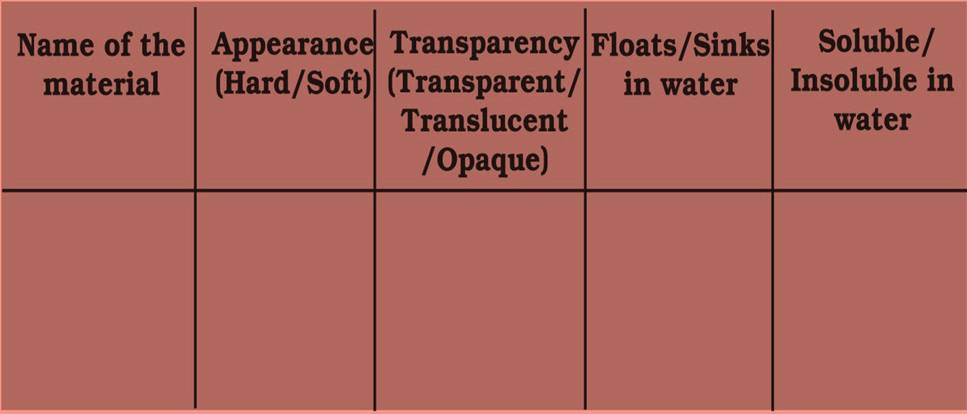
Table.4.1
Answer 18
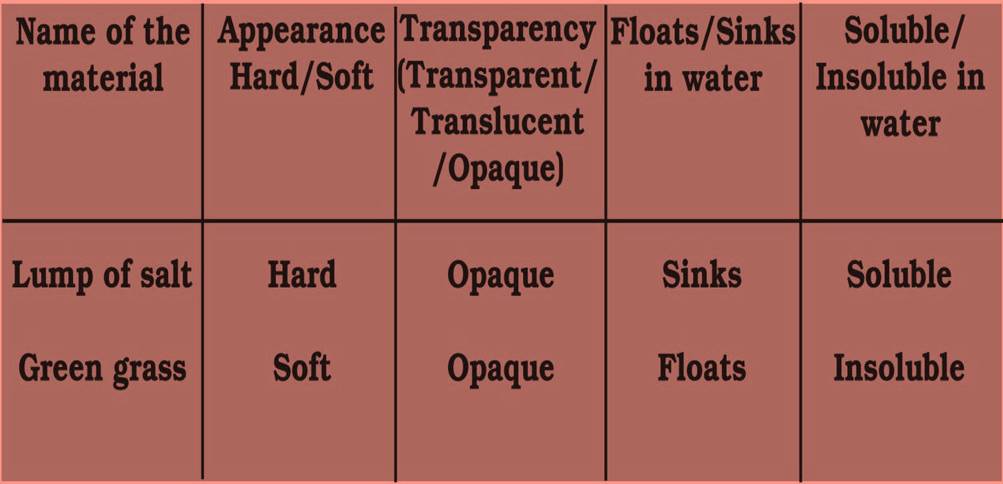
Question 19
Arrange the jumbled words to arrive at the appropriate names of materials and also write two uses of each.
(a) milaunuim
(b) tcaslpi
(c) soekrnee
(d) gavnier
Answer 19
(a) aluminum – foil, aircrafts, etc.
(b) plastic – bucket, pencil box, etc.
(c) kerosene – fuel, solvent, etc.
(d) vinegar – food ingredient, preservative, etc.
Question 20
Match the objects given in Column I with the materials given in Column II.
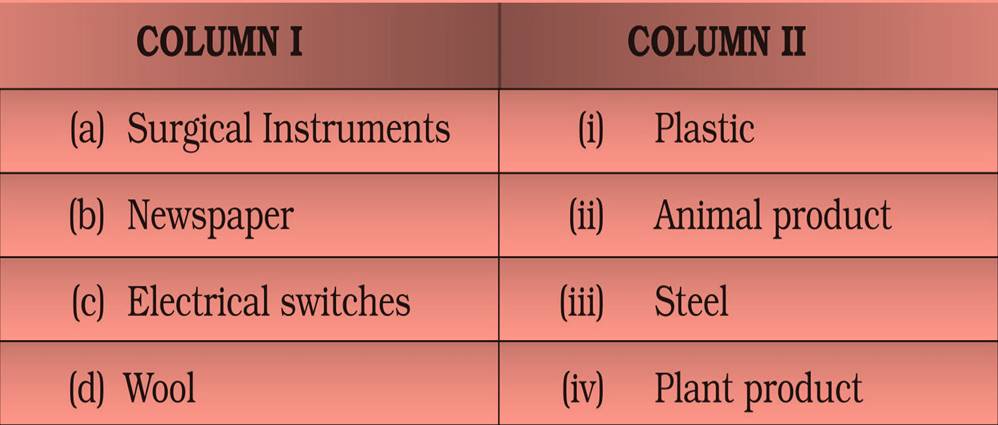
Answer 20
a- (iii) b- (iv) c- (i) d- (ii)
Question 21
Pick five objects from the word box given as Fig. 4.1 which are opaque and would sink in water.
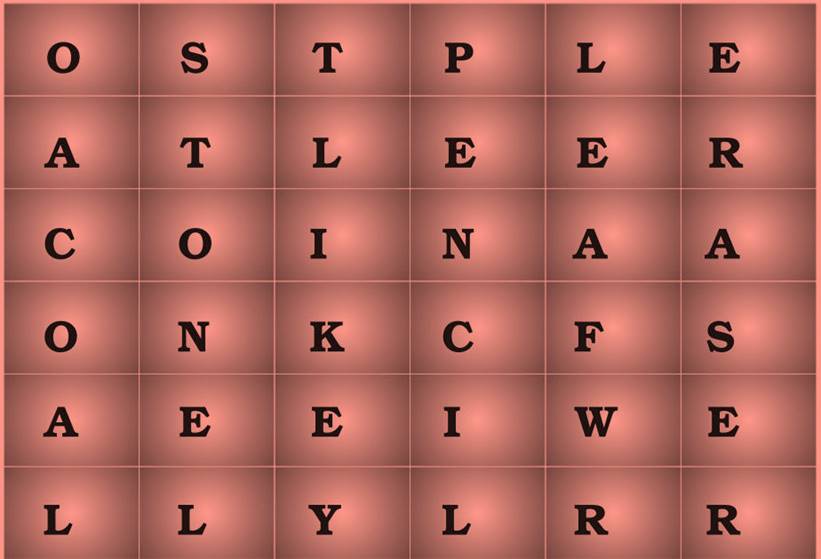
Fig.4.1
Answer 21
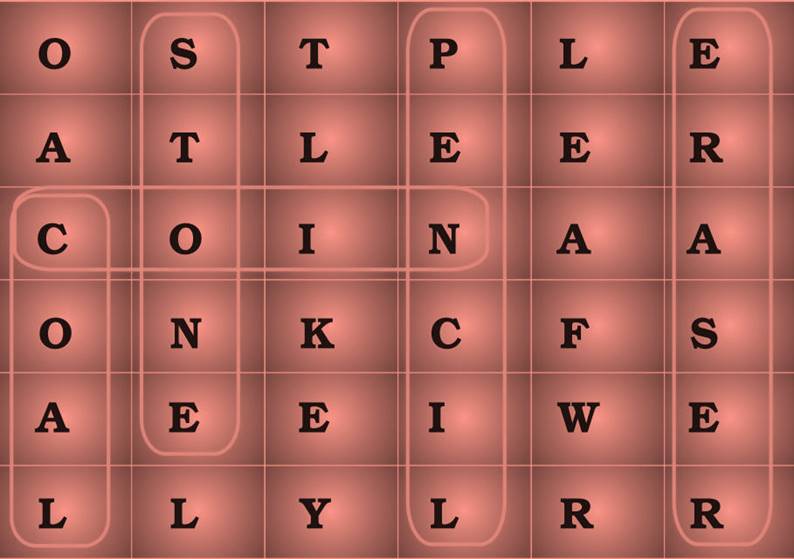
The answer may include other items as well.
Long Answer Questions
Question 22
Chalk, iron nail, wood, aluminum, candle, cotton usually look different from each other. Give some properties by which we can prove that these materials are different.
Answer 22
Write on the basis of lustre, hardness, softness, roughness or smoothness.
Question 23
Why do you think oxygen dissolved in water is important for the survival of aquatic animals and plants?
Answer 23
Dissolved oxygen is available for animal and plants for respiration and survival.
Question 24
Differentiate among opaque, translucent and transparent materials, giving one example of each.
Answer 24
Objects cannot be seen through opaque materials.
Example: Cardboard.
Objects cannot be seen clearly through translucent materials.
Example: Oiled paper.
Objects can be seen clearly through transparent materials.
Example: Hand lens
Question 25
Sugar, salt, mustard oil, sand, sawdust, honey, chalk powder, petals of flower, soil, copper sulphate crystals, glucose, wheat flour are some substances given to Paheli. She wants to know whether these substances are soluble in water or not. Help her in identifying soluble and insoluble substances in water.
Answer 25
Soluble in water – Sugar, Salt, Honey, Copper sulphate crystals, Glucose
Insoluble in water – Mustard oil, Sand, Sawdust, Chalk powder, Soil, Petals of flower, Wheat
flour

